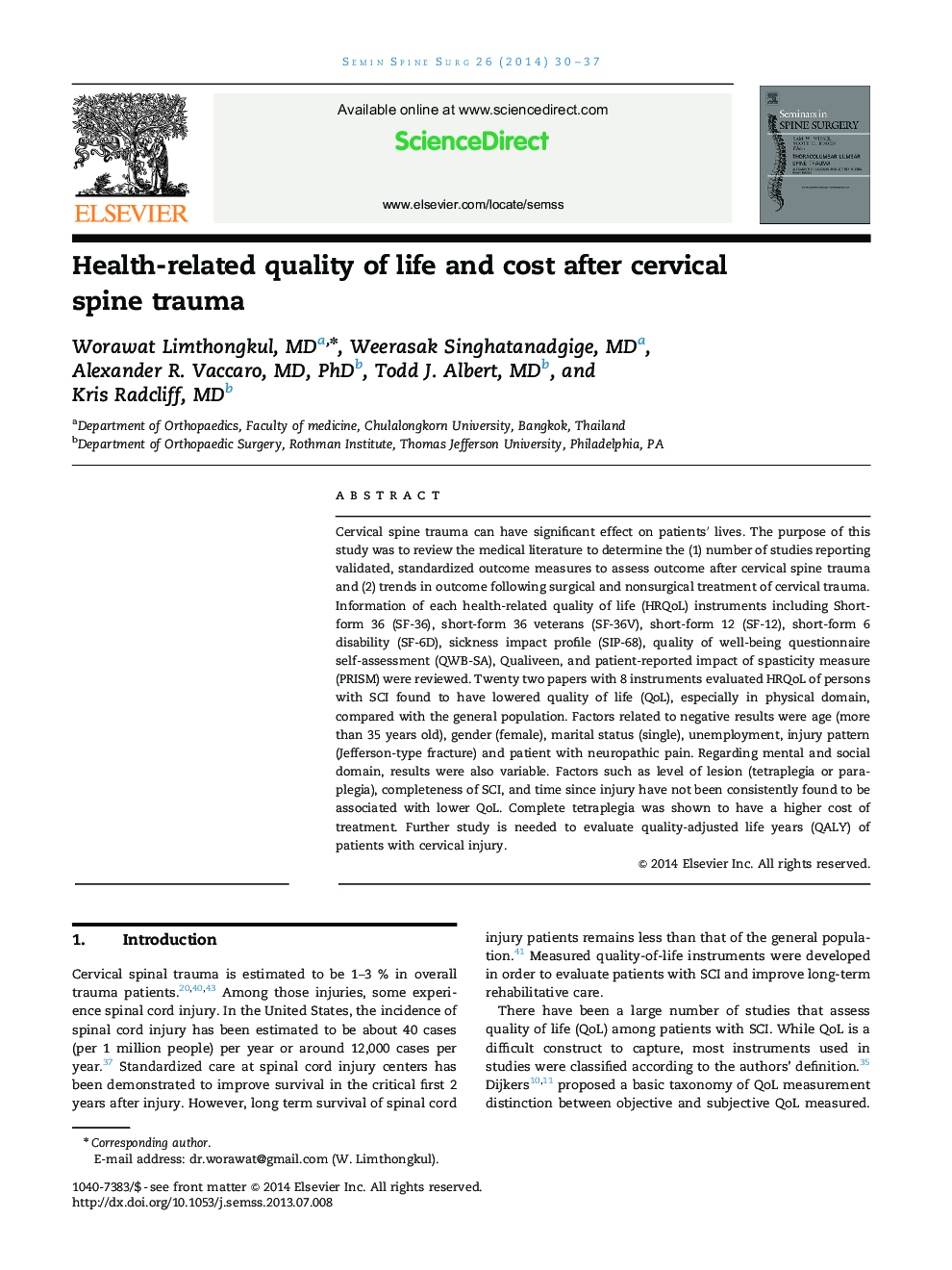| کد مقاله | کد نشریه | سال انتشار | مقاله انگلیسی | نسخه تمام متن |
|---|---|---|---|---|
| 4094701 | 1268484 | 2014 | 8 صفحه PDF | دانلود رایگان |
Cervical spine trauma can have significant effect on patients' lives. The purpose of this study was to review the medical literature to determine the (1) number of studies reporting validated, standardized outcome measures to assess outcome after cervical spine trauma and (2) trends in outcome following surgical and nonsurgical treatment of cervical trauma. Information of each health-related quality of life (HRQoL) instruments including Short-form 36 (SF-36), short-form 36 veterans (SF-36V), short-form 12 (SF-12), short-form 6 disability (SF-6D), sickness impact profile (SIP-68), quality of well-being questionnaire self-assessment (QWB-SA), Qualiveen, and patient-reported impact of spasticity measure (PRISM) were reviewed. Twenty two papers with 8 instruments evaluated HRQoL of persons with SCI found to have lowered quality of life (QoL), especially in physical domain, compared with the general population. Factors related to negative results were age (more than 35 years old), gender (female), marital status (single), unemployment, injury pattern (Jefferson-type fracture) and patient with neuropathic pain. Regarding mental and social domain, results were also variable. Factors such as level of lesion (tetraplegia or paraplegia), completeness of SCI, and time since injury have not been consistently found to be associated with lower QoL. Complete tetraplegia was shown to have a higher cost of treatment. Further study is needed to evaluate quality-adjusted life years (QALY) of patients with cervical injury.
Journal: Seminars in Spine Surgery - Volume 26, Issue 1, March 2014, Pages 30–37
